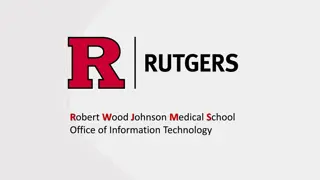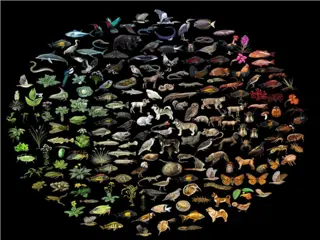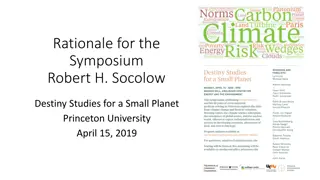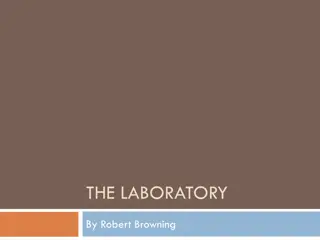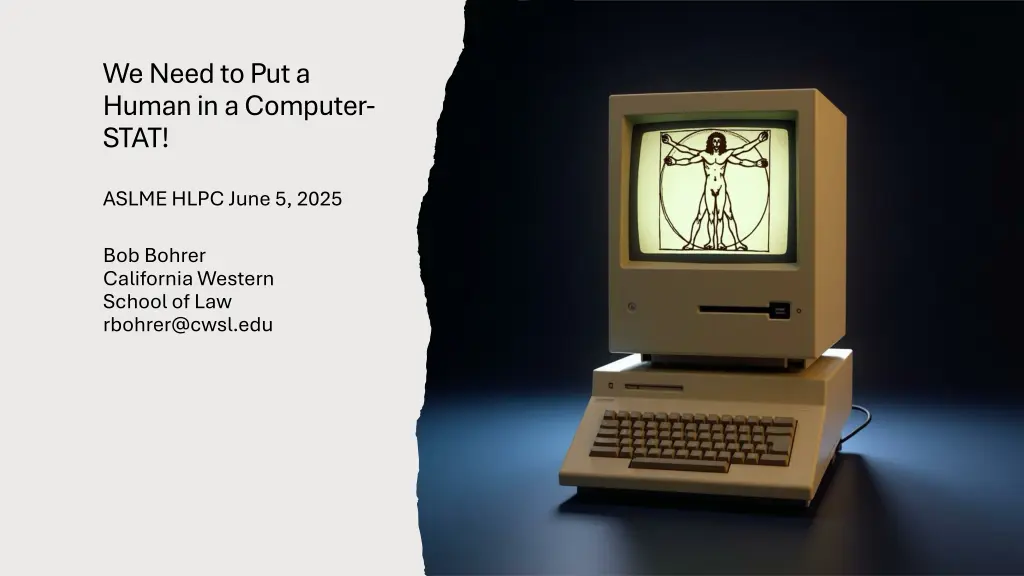
Putting a Human in a Computer: The Future of AI Biology
Explore the concept of putting a human in a computer, its potential impact on drug development and healthcare, alongside the necessary building blocks in biology and computing. Delve into funding challenges and licensing structures in the AI biology realm, shedding light on the shift towards virtual cell models and the immense data and computing power requirements for such revolutionary advancements.
Download Presentation

Please find below an Image/Link to download the presentation.
The content on the website is provided AS IS for your information and personal use only. It may not be sold, licensed, or shared on other websites without obtaining consent from the author. If you encounter any issues during the download, it is possible that the publisher has removed the file from their server.
You are allowed to download the files provided on this website for personal or commercial use, subject to the condition that they are used lawfully. All files are the property of their respective owners.
The content on the website is provided AS IS for your information and personal use only. It may not be sold, licensed, or shared on other websites without obtaining consent from the author.
E N D
Presentation Transcript
We Need to Put a Human in a Computer- STAT! ASLME HLPC June 5, 2025 Bob Bohrer California Western School of Law rbohrer@cwsl.edu
1. What do I mean by putting a human in a computer? 2 Why we need to pursue that goal. 3. What are the needed building blocks both on the biology side and the computing side? Putting a Human in a Computer: What s It All About 4. The impact of the current cuts in science funding 5. Licensing: A look at the current IP and licensing structure for AlphaFold 3, the current best tool for AI biology, and briefly possible IP and licensing structures that might best serve the goals of the proposed decade-or-more-long project . 6. A human in a computer would change drug development, the pharmaceutical industry, and provide almost unimaginable improvements in human health.
In December, Bunne et al published an article in Cell entitled: How to build the virtual cell with artificial intelligence: Priorities and opportunities - Here are the 5 main take-aways from that paper: 1. The authors use the term virtual cell to define a computational model that simulates the biological functions and interactions of a cell. 2. Two exciting revolutions in science and technology in AI and in omics now enable the construction of cell models learned directly from data. 3. The biological research community has relied on computational models for analyzing data from past experiments based on an existing hypothesis. The virtual cell could switch the paradigm by computationally exploring a vast array of possible hypotheses through in silico experimentation. 4. The AIVC can capture cell biology at three distinct physical scales by representing (1) molecules and their structures found within individual cells, (2) individual cells, as spatial collections of those interacting molecules and structures, and (3) how individual cells interact with one another and the non-cellular environment in a tissue. 5. Scientists could use the AIVC to capture the influence of both genetic factors and environmental factors to predict the effect of treatments on patients, given a virtual representation of a patient s molecular profile. Putting a Human in a Computer: AIVC
Its a LOT of data. Already the Short Read Archive of biological sequence data holds over 14 petabytes of information which is more than 1,000 times larger than the dataset used to train ChatGPT. A. From 1982 to the present, the number of bases in GenBank has doubled approximately every 18 months. B. Protein Data Bank increases: >100,000 structures in 2014; >200,000 structures in 2023; >1,000,000 computed structures in 2025! C. Reports of human genetic variations of clinical significance have been growing at an annual rate of 31%!! It s a LOT of computing power. The computing power needed is the quantum computer of 2035 that is being hotly pursued now by tech companies big and small. From AIVC to AIVH: What Do We Need to Get the AIVH? Biological Data and Computing Power
Funding the AIVH: Where Will the Money Come From for the Biological We need to acknowledge the current state of science funding and the uncertainty over the future of science in the U.S. However, it is reasonably likely that at some point in the next 5 years we will emerge from the current dark age and that even during these next 5 years research both in the U.S. and abroad, particularly in China, will continue to produce important knowledge in the life sciences, with growth in the databases continuing to curve upwards at an exponential rate. Data?
Funding for the Computing Power The Development of Quantum Computing Here the situation is somewhat less clouded by the current uncertainty concerning U.S. funding for science. Much of the investment in the development in quantum computing is occurring in the private sector, by the big names in computers and software, including IBM, Microsoft, Intel, Google, and Amazon, as well as a number of startups. I am optimistic that life science research will provide sufficient data to support the training of the AIVH and confident that by 2035 quantum computing will provide sufficient power to use that data to produce the AIVH.
Two different approaches to ensuring access: the licensing and use terms for AlphaFold 3 and, the licensing of the Cohen-Boyer patent a non-exclusive licensing scheme which was free to academic researchers and with a rate for commercial use of $10,000 upfront and a royalty rate that capped at 1% of sales. Access and IP AlphaFold 3 unrestricted access for academic research a ban on commercial use. AlphaFold s results are available to commercial users on an open-source basis, under a Creative Commons License 4.0 for all structures deposited in the Protein Data Bank or that are published in a scientific publication.
The AlphaFold approach of deposit plus Creative Commons License 4.0 allows simultaneous use by multiple commercial efforts but with no first-mover advantage and, of course, with the knowledge that all developed products will be open to competition. Access and IP (continued) The Cohen-Boyer approach free to academic users and non-exclusive license terms of $10,000 upfront for commercial use with royalties capped at 1%. Significant revenues for the inventors without any chilling effect on the development of products.
The benefits for human health are potentially greater than all the health care gains that we have made from Pasteur through the present date. The AIVH offers the potential to design a safe and effective drug for future pandemics within hours of identifying the causative pathogen and the possibility of being able to cure or radically ameliorate almost every human disease in the decades after the creation of the AIVH. According to the CDC our annual health care expenditures are 4.5 TRILLION dollars! If the AIVH could ultimately cut that figure by even 20% imagine what that would mean for all our other pressing but underfunded needs. That s why we need to make the AIVH a goal and begin our effort to make it a reality. The Benefits of Creating an AIVH
AI will greatly reduce the risks of drug development in the pharmaceutical industry. The day when in silico biology and AI have progressed to the point where a safe and effective drug for a serious disease can be developed using an AIVH for all phases of drug development cannot come too soon. If along the way, drug development becomes routinely done through RFPs, then to paraphrase Shakespeare, the first thing we ll do is fire all the pharmaceutical company CEOs. But the AIVLP (artificial intelligence virtual law professor) could be a problem. Postscript




